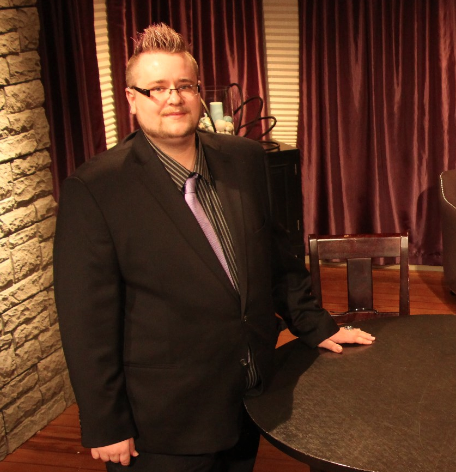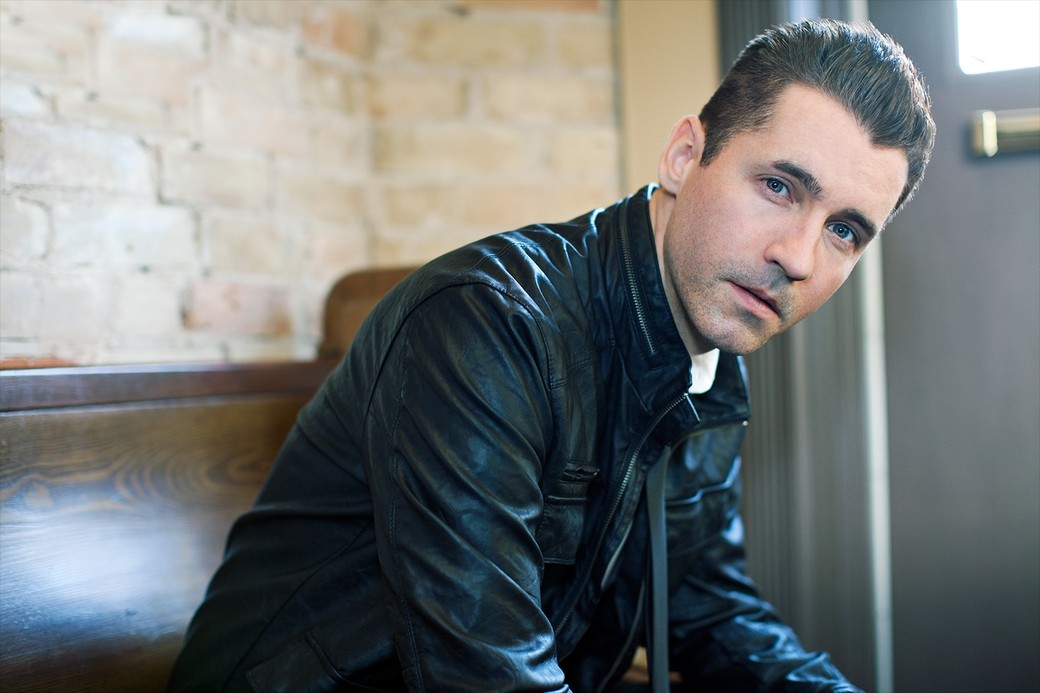
Matthew Stapley: An Insider’s Perspective on the Psychic Profession
Eighteenth-century French philosopher Julien Offray de La Mettrie claimed that “everyone is born with psychic abilities; it’s just a matter of learning how to access them.” Ottawa-based psychic-medium Matthew Stapley would tend to agree. In an exclusive interview with Ottawa Life Magazine, Stapley was quick to point out that the psychic’s ability to perceive is not limited to psychics alone; it can be learned by those from all backgrounds, whether spiritual or not.
As Stapley puts it: “All you really have to do is figure out how your body, mind and spirit work together. And then, if you can do that, you can perceive things.” Doubtless, that is easier said than done, but Stapley sheds light on the inner workings of the psychic profession and deals with some misconceptions that surround it.
Matthew Stapley is the director of TransdimensionalBeing Associates Inc., an organization that conducts psychic readings and healing services in private, group or event settings. He is also the host of Rogers Television’s unique new weekly show, Psychic Insights with Matthew Stapley. The program’s format combines interviews with psychic practitioners and real-time viewer interaction. Viewers are able to call in and ask Stapley and his guests questions about the unknown.
Stapley first became aware of his psychic abilities at a very young age when his father, who was traveling in Thailand at the time, telephoned his family in Carleton Place. Eight year-old Matthew was able to describe in detail the room in which his father was sitting some 13,000 kilometers away. Stapley explained that his accurate, sight unseen, description of his father’s lodging on the other side of the world is an example of a psychic skill that the profession calls “remote viewing” or “the ability to see and describe things and places when you’re not immediately present.”
Stapley’s line of work is that of a psychic-medium — but what exactly does that mean? According to Stapley, psychic-mediums “perceive things about people, about the spirit energies that are around them.
“Most of what I do is spirit communication,” he says. Since any discussion of “spirit energies” can quickly go beyond esoteric for those unfamiliar with the psychic profession, Stapley explains that, when he and his fellow psychic-mediums refer to “spirit” and “spirit energies,” what they mean is that “spirit can be either a specific spirit that the person [with whom the psychic-medium is conducting a reading] knew or, alternatively, spirit can be the energy of the spirit world in general around them.”
Expanding upon this guide to the work of a psychic-medium, Stapley characterizes his work, and that of others like himself, as a “modality of healing.” As he sees it, psychic-mediums allow people to obtain closure, particularly since there are few places where people can find closure with someone who has passed away. It is the healing modality which “provides a place in people’s lives where they can communicate with the departed again.”
Stapley stresses the importance of understanding the different types of psychic practitioners (and the services they offer) to ensure that the needs of potential clients are met. In addition to psychic-mediums like Stapley, there are two other types of psychic practitioners, each sharing a common yet distinct skill set. The first are spiritual guides. Like psychic-mediums, spiritual guides tap into the spirit energy of their client. However, as Stapley explains, unlike psychic-mediums, spiritual guides channel the spirits in the client’s aura to help guide the client through life. Stapley explains that spiritual guides “guide people on their path” and act as an “advisor” to the client. The other type of psychic practitioner is called a healer. Healers provide “energetic healing facilitation.” That is, healers “hold space for a spirit to come in and do the work it needs to do” to help mend a client’s physical, neurological or psychological ailments, common examples of which may be arthritis or depression.
Beyond these three categories of psychic practitioners, other psychic abilities may be used, depending on the type of practitioner a psychic might be. Stapley notes that, within the psychic profession, these abilities are referred to as the “clair gifts” which include “clairvoyance (clear seeing); clairaudience (clear hearing); clairsentience (clear feeling); and claircognizance (clear knowing). These are the psychic abilities that enable the psychic practitioner to provide a service, which often entails reading their clients’ future. Stapley considers claircognizance to be the most challenging of the clair gifts, based upon the baggage that it places on the psychic who possesses that particular ability. For instance, a psychic possessing claircognizance “could just meet you and automatically know things about you.” Stapley notes that, for psychics with claircognizance, “instead of perceiving it [information about their client or anyone else they come across], they just know it.” He maintains that this is the most challenging of the clair gifts, since a psychic who possesses it can often be overwhelmed by a constant bombardment of information about strangers they encounter, whether client or not. Consequently, Stapley is quite satisfied to possess the two gifts of clairvoyance and clairaudience.
Many people automatically associate a psychic with the reading of tarot cards, but Stapley repeatedly uses his ability to conduct remote viewing and spirit communication without the assistance of tarot cards. “Cards are really good. They’re helpful to confirm things but, when I actually do readings with cards, I find it limiting because you’re stuck with what is on the cards.” He prefers a cardless approach and justifies this by explaining that “I feel like, when I don’t use cards, I just listen to what I’m hearing and seeing in somebody’s aura. I find that to be a lot more accurate as well.” And when it comes to ethics, Stapley understands the importance of being honest with clients. “If a reading is not going where I think it should be, then I will hand it off to another person who is better suited to help my client.”
In the mind of the general public, many enduring misconceptions surround the psychic profession. All types of psychics — and not just psychic-mediums like himself — must face this situation. The most common misconceptions originate with skeptics, who see the psychic profession as contrived and insincere, if not totally dishonest. Should skeptics participate in a reading, they may do so with their minds closed, expecting the psychic to be overwhelmingly wrong about just about everything. Stapley has had to deal with skeptics seeking to “test” the psychic-medium on numerous occasions and explains that “I’ve had skeptics want to test me, but I always say ‘no’ because I believe there’s nothing objective they can test with. If they want to find something wrong in what I say, they’ll find it, and if they don’t, they won’t.”
Those who do not question the legitimacy of the psychic profession also play a role in perpetuating misconceptions. Stapley explains that: “People who believe in this expect us to be right about everything one hundred per cent of the time — which is impossible. Even in a reading about things like the person’s past, we can be totally wrong. And that’s just part of the job.” This human element of the psychic profession often escapes notice because the media rarely reveals the shortcomings of high-profile psychics, which bothers Stapley who insists that “the media needs to show psychics being inaccurate.” He claims that to do so is “extremely important, especially from an outsider perspective.
“There are times when psychic mediums are bang on in their readings, but there are also times when they’re not. I think that to help both sides — the skeptical and the non-skeptical — the media need[s] to show both sides.” To do so would help contextualize the reality as well as the limits of the psychic profession.
Another common misconception is that law enforcement agencies will often use psychic-mediums to help solve criminal investigations. Stapley claims that while this practice is more common in the United States, it does not often occur in Canada since “it’s hard to use in court” if the investigation to which a psychic-medium contributed does eventually go to trial. That said, Stapley admits that “I’ve worked on a few cases helping to find animals and people but never for the police, only for the families involved.” He adds that, in Canada, if a psychic-medium is involved in an investigation, be it criminal or not, “most often the families involved will hire a psychic-medium on their own, but the police don’t tend to.”
Aside from the misconceptions perpetuated by skeptics and believers alike, Stapley notes that, in the eyes of many, there remains a stigma of illegitimacy attached to the psychic profession. But while media coverage of psychics may well perpetuate the misconception among believers that psychic-mediums are never inaccurate, Stapley notes that the media is also playing a role in lessening the stigma attached to the profession. Since there are more television and radio programs about the psychic profession today, the result is that the profession is becoming more accepted. Nonetheless, although “prior to the last ten to fifteen years, psychics were more marginalized as professionals and people would come to see their psychics in secret; even today, psychic-mediums are still often the last stop after the psychiatrist’s office.” Yet this need not be the case because, like the 18th century philosopher, Stapley is convinced that: “All people, and not just exclusively those in the psychic profession, have the ability to perceive things. All you really have to do is figure out how your body, mind and spirit work together.”
Psychic Insights with Matthew Stapley airs weekly on Rogers Television Cable 22 on Monday at 4pm.











